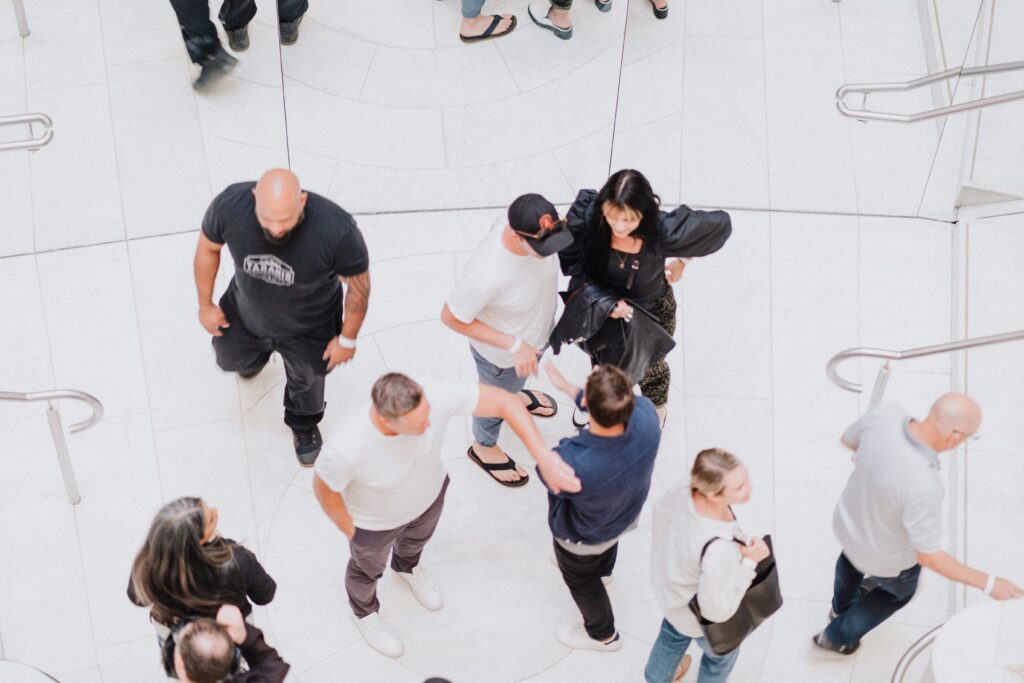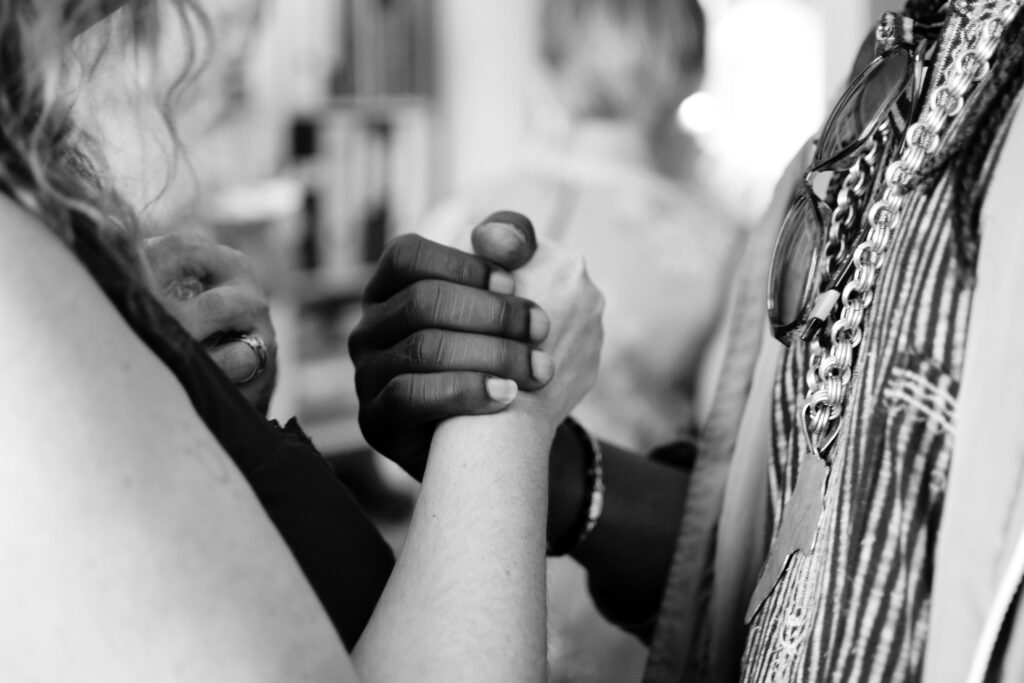Introduction
In today’s fast-paced world, many introverts find themselves pondering a shift in their social approach. Embracing more extroverted tendencies might seem daunting, but it’s an unconventional process that’s gaining traction. Enter the realm of the introvert to extrovert transition, a journey that’s not just about changing how you interact, but also about discovering new energy sources through social connections. “Boost Your Energy Levels Through Effective Social Interactions” is not just a title; it’s an invitation to explore how stepping out of your comfort zone can lead to a more energized and fulfilling life. With simple, straightforward guidance, this article aims to show you how social interactions, when navigated wisely, can be a powerful tool for personal transformation and energy enhancement. 🌟💡🔄🚀

Understanding the Link Between Social Interactions and Energy
Understanding the link between social interactions and energy levels is crucial, especially for introverts who are embarking on a journey from introversion to extroversion. It’s a common misconception that introverts are always drained by socializing. In reality, the type and quality of interactions play a significant role in how energized or depleted one feels.
Firstly, it’s important to identify what kind of social interactions energize you. Are there specific people or groups that leave you feeling more refreshed? Or perhaps certain topics or activities that spark your interest and enthusiasm? This self-awareness is key. If you’re unsure about where you stand on the introvert-extrovert spectrum, consider taking an introvert test. This advanced test is designed to help you understand your social energy dynamics better.
Once you have a clearer understanding of your social energy patterns, you can start to experiment with different types of interactions. For instance, many introverts find small group settings or one-on-one conversations more fulfilling and less draining than large, noisy gatherings. Also, engaging in meaningful conversations, rather than small talk, can be surprisingly energizing. It’s about finding the right balance that works for you.
Remember, this isn’t about forcing yourself into uncomfortable situations. It’s about gradually expanding your comfort zone and discovering new facets of your personality. It’s a process that involves learning, adapting, and sometimes, recharging in solitude. The goal is to find a harmonious balance that allows you to enjoy social interactions without feeling overwhelmed.
As you explore this new terrain, keep in mind that change takes time and patience. Every small step you take towards understanding and enhancing your social energy is progress. With each interaction, you gather more insights about yourself and how you connect with others, paving the way for a more energized and fulfilling social life.

Choosing the Right Social Circle for Energy Enhancement
Choosing the right social circle is a pivotal aspect of enhancing your energy levels, especially for those transitioning from introversion to extroversion. It’s not just about increasing the quantity of your interactions but about nurturing quality relationships that resonate with your personality and interests.
When building or modifying your social circle, consider people who share similar values and interests. Such alignments create a foundation for meaningful and energizing interactions. It’s easier to feel energized when you are around people who understand and appreciate your viewpoints and passions. However, this doesn’t mean you should only seek out carbon copies of yourself. Diversity in thought and experience can be equally stimulating and offer new perspectives that challenge and invigorate your mind.
For those looking to discuss and explore these concepts further, joining an intro to extro community can be incredibly beneficial. These communities provide a safe space to share experiences, learn from others who are on a similar journey, and offer support and encouragement. Engaging in these communities can also help you refine your understanding of what you seek in your social interactions and relationships.
Another key aspect is learning to set boundaries. This becomes crucial as you expand your social circle. It’s about knowing when to say yes to invitations and when to prioritize your own needs for solitude and rest. Balancing social time with personal time is not just healthy but necessary for sustaining your energy levels.
Remember, the goal is not to transform into a social butterfly overnight. It’s about gradually finding your rhythm in social settings that work for you. This might mean saying no to certain events and yes to others, or perhaps initiating activities yourself that align more closely with your interests. By mindfully choosing your social circle and engagements, you can ensure that your social life is both enriching and energizing, marking a significant step in your journey from introversion to extroversion.

The Impact of Positive vs. Negative Interactions on Energy Levels
The impact of positive versus negative interactions on energy levels is a significant aspect to consider, particularly for those transitioning from introversion to extroversion. Positive social interactions, those that are affirming, engaging, and respectful, can significantly boost your mood and energy. On the other hand, negative interactions, marked by conflict, disrespect, or emotional drain, can leave you feeling depleted.
Understanding this dynamic is key to managing your energy levels. Positive interactions often involve a mutual exchange of ideas, laughter, and support. These exchanges can leave you feeling uplifted and invigorated. For instance, a conversation with a friend who encourages your ideas, or a group activity that aligns with your interests, can be particularly energizing. These interactions can reinforce your self-worth, increase your happiness, and subsequently boost your energy levels.
Conversely, negative interactions can have the opposite effect. They can induce stress, diminish self-esteem, and drain your energy. This could be a result of spending time in a hostile work environment, engaging in one-sided relationships, or enduring social settings that contradict your values. Recognizing and minimizing such negative experiences is crucial for maintaining your energy.
To navigate this landscape, consider reading our intro to extro roadmap. This guide offers a fresh perspective, different from conventional advice, on how to manage social interactions for energy optimization. It emphasizes the importance of recognizing the types of interactions that serve you and those that don’t.
The ability to discern and choose your social engagements can empower you to create a more energizing and fulfilling social life. It’s about aligning with people and environments that uplift you and distancing yourself from those that drain your energy. As you continue to embrace your journey from introversion to extroversion, remember that not all social interactions are equal. Prioritize those that add value and positivity to your life, and you’ll find your energy levels and overall satisfaction significantly improving.

How to Avoid Energy Drains in Social Settings
Navigating social settings while avoiding energy drains is an essential skill, especially for those shifting from introversion to extroversion. It involves recognizing and steering clear of situations or interactions that are likely to leave you feeling depleted. This doesn’t mean avoiding socializing altogether; rather, it’s about being selective and strategic in your social endeavors.
One effective strategy is to identify the types of social settings that you find most draining. For some, large parties or networking events can be overwhelming, while others might find certain group dynamics or specific individuals energy-depleting. Once you’ve identified these triggers, you can start to plan your social calendar in a way that minimizes exposure to these environments. This might mean choosing smaller, more intimate gatherings over large events, or spending time with individuals who uplift you rather than those who leave you feeling exhausted.
Another key aspect is learning to listen to your body and mind. Often, we ignore the early signs of social fatigue, pushing ourselves beyond our comfortable limits. Pay attention to how you’re feeling during social interactions. If you start to feel overwhelmed, give yourself permission to step back or leave. Managing your energy is not just about the interactions you have, but also about how you handle them.
Preparation can also play a vital role. Before attending a social event, take time to rest and mentally prepare. This might involve engaging in a relaxing activity, getting enough sleep, or spending some quiet time alone. Post-event, allow yourself time to recharge. This could be through solitude, engaging in a hobby, or simply relaxing.
Lastly, setting boundaries is crucial. Be honest with yourself and others about your social needs and limits. It’s okay to decline invitations or leave events early. Remember, the goal is to create a social life that energizes rather than drains you. By being mindful of your energy levels and taking proactive steps to manage them, you can enjoy socializing while maintaining your well-being.
How to Recharge After Socially Exhausting Events
Recharging after socially exhausting events is an essential aspect of managing your energy, especially for those transitioning from introversion to extroversion. Even the most enjoyable social interactions can sometimes leave you feeling drained, making it crucial to have strategies in place for effective recharging.
First and foremost, recognize the signs of social exhaustion. You might feel mentally fatigued, irritable, or just out of sorts. Acknowledging these feelings is the first step toward effective recovery. Once you realize you’re socially exhausted, give yourself permission to take the time you need to recharge. This isn’t selfish; it’s an act of self-care.
The methods of recharging can vary from person to person. Some might find solace in quiet activities like reading, gardening, or listening to music. Others might prefer more active forms of relaxation like a leisurely walk, a soothing yoga session, or engaging in a creative hobby. The key is to find activities that are restorative for you personally.
Creating a comfortable and calming environment can also aid in the recharging process. This might involve spending time in a favorite room, surrounding yourself with things that bring you comfort, or simply ensuring that you have a quiet space where you can be undisturbed.
It’s also important to not rush this process. The time it takes to fully recharge can vary, and it’s essential to listen to your body and mind. Avoid jumping back into another social event before you feel ready. Respecting your own pace is crucial for maintaining your energy levels in the long term.
Lastly, reflect on your experiences. Consider what aspects of the social event were particularly draining and think about how you might approach them differently in the future. This reflection can help you better prepare for future events and minimize the likelihood of experiencing the same level of social exhaustion.
By embracing these practices, you can ensure that you have the energy reserves needed to enjoy your social life while maintaining your overall well-being. Remember, the journey from introversion to extroversion is about finding a balance that works for you, and effective recharging is a key part of this process.
Integrating Effective Social Interactions into Everyday Life for Enhanced Energy
Integrating effective social interactions into everyday life for enhanced energy is the final piece of the puzzle for those transitioning from introversion to extroversion. This integration is about creating a sustainable lifestyle that allows you to enjoy the benefits of socializing without feeling overwhelmed or depleted.
The first step in this integration is setting realistic social goals. This could mean gradually increasing the frequency of your social engagements, trying out new types of events, or simply committing to regular interactions with a close group of friends. The key is to start small and increase your social activities at a pace that feels comfortable for you.
Incorporating social activities into your routine can also be beneficial. Regularly scheduled social interactions, like a weekly coffee with a friend or a monthly book club meeting, can provide structure and make socializing a more natural part of your life. These consistent engagements can help build your social confidence and energy over time.
Another important aspect is to mix different types of social interactions. Balancing one-on-one meetings with group activities can provide varied social experiences, helping you to discover what energizes you the most. Additionally, varying the settings — outdoor gatherings, cafes, or virtual meetups — can keep your social life interesting and engaging.
Mindfulness during social interactions is also crucial. Being present in the moment helps you connect more deeply with others, making the experience more fulfilling and energizing. Try to focus on the conversation and the people you are with, rather than worrying about external factors or your own self-consciousness.
Lastly, reflect on and adjust your social habits as needed. Regularly take stock of how you feel after different types of social interactions and adjust your approach accordingly. This ongoing process of reflection and adjustment will help you fine-tune your social life to better suit your evolving needs.
By thoughtfully integrating social interactions into your life, you can enhance your energy levels and enjoy the benefits of a more extroverted lifestyle, while still honoring your introverted roots. Remember, the goal is to find a balance that allows you to thrive socially and personally.
Conclusion
In conclusion, navigating the journey from introversion to extroversion is a unique and personal experience that can lead to a more energized and fulfilling life. This transition isn’t about abandoning your introverted nature; it’s about expanding your horizons, understanding your energy patterns, and learning to harness the power of social interactions in a way that enriches your life.
Throughout this journey, it’s important to remember that balance is key. Finding the right mix of social engagement and personal time, choosing social circles that uplift you, managing negative interactions, and learning how to effectively recharge are all crucial elements in this process. The aim is not to transform into a different person overnight but to gradually explore and embrace new aspects of your personality.
As you embark on this path, be kind to yourself. Change takes time, and it’s okay to have setbacks along the way. Every step you take, whether big or small, is a part of your growth. Embrace the learning process, be open to new experiences, and most importantly, listen to your own needs.
Remember, the ultimate goal is to enhance your life through richer, more energizing social interactions. By doing so, you’re not just increasing your social energy; you’re also opening yourself up to a world of new possibilities, connections, and personal growth. The journey from introversion to extroversion is as rewarding as it is challenging, and it promises a more vibrant and energetic life for those who choose to embark on it.




